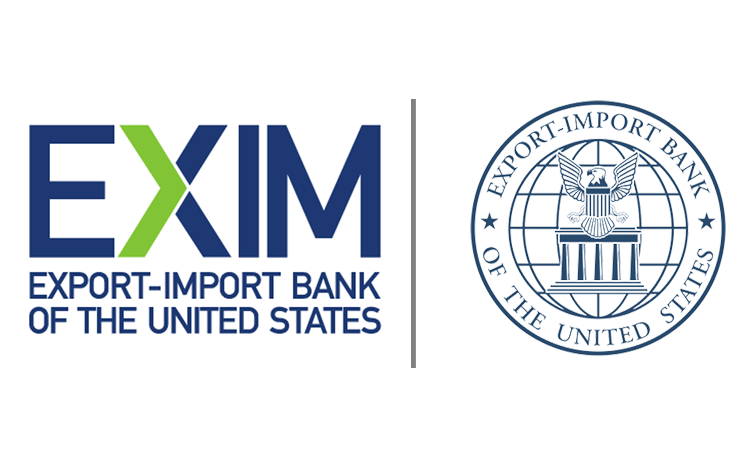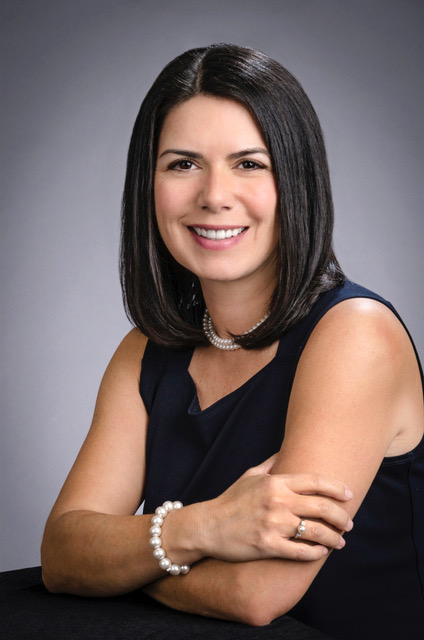Helping Exporters Compete and Succeed: An Interview With EXIM’s Sandra Donzella

When Sandra Donzella was a young girl growing up in Chile, her dad worked at a local bank. Inspired, she would often role play at home that she was a bank teller, giving out money to customers.
Later, while in college, Sandra spent a year studying abroad in Spain. The experience exposed her to different cultures and really cemented her passion for a career in international business.
“I always knew in my heart that I wanted to be involved in international business,” says this now Deputy Managing Director for the Export-Import Bank of the U.S.’s (EXIM) Western Region.
Fast forward a couple decades and Sandra has spent her entire career dedicated to helping U.S. exporters compete and succeed in foreign markets by using export finance solutions.
She launched this career at a regional bank in Connecticut that did trade finance using the export financing programs offered by the U.S. Small Business Administration’s (SBA) Office of International Trade and EXIM. Sandra served as export program administrator and then international banking officer responsible for helping the bank comply with requirements set forth by the SBA and EXIM and their loan guarantee programs.
In the mid-‘90s, Sandra moved to a small bank—also in Connecticut—that was looking to launch an international lending division utilizing EXIM’s Loan Guarantee Program and with Mexico and Brazil as the target market. “I’m fluent in Spanish so that, along with my professional background, made me a good fit,” she says. They provided loans to businesses in Mexico and Brazil purchasing U.S.-made capital equipment.
Then, Sandra joined another local bank where she helped to build their international lending division and continued to work with EXIM’s programs to finance importers of U.S.-made equipment. Later in 2001, about eight years into her career, she discovered an opportunity at EXIM’s Western Regional Office in California while looking to move to a state with a warmer climate.
EXIM is headquartered in Washington, DC and has a network of 12 regional offices across the country. Sandra is based out of San Diego at the offices of the U.S. Commercial Service, which is the trade promotion arm of the U.S. Department of Commerce’s International Trade Administration—another federal agency with a similar mission of supporting U.S. jobs through exports.
Today, Sandra’s role is outreach and business development to engage with as many exporters as possible, and to collaborate with resource partner organizations, to make sure there is awareness of EXIM’s programs. “I have an enormous amount of respect for entrepreneurs, especially those who have the courage and drive to start a business from the ground up,” she says. “I want to empower them with the tools to help them compete more effectively in global markets and succeed in their export journey,” she says.
“I also think my passion comes from wanting to get more businesses engaged in exporting,” she continues. “It’s always surprising to me that less than 1 percent of companies in our country export, so I strive to be part of the solution to get us to a higher number and especially help small businesses capture all the benefits of exporting.”
One of the greatest challenges she sees is the belief by small businesses that exporting is too risky, complicated and more suitable for large corporations, when that’s not the case. The fact is that businesses of all sizes can succeed in global markets, and the U.S. Census Bureau data continues to show that the majority of exporters in the U.S. are SMEs.
Sandra likes to point out that nearly 90% of EXIM’s customers are small businesses, and generally over 50% of the transactions EXIM is asked to support are for amounts under $500,000. And if risk is a concern, EXIM’s export credit insurance is specifically designed to take most of the risk element out of the transaction. There are also multiple resources from the private sector, as well as from the state, regional and federal levels to help businesses succeed in exporting.
Sandra knows well that a lack of financing can be a major impediment to exporters who need working capital to bid on international contracts, fulfill export orders and capture growth opportunities globally. Exporters also need risk protection to offer competitive repayment terms, since most buyers are increasingly insisting on some level of flexibility (such as 30-60 days, or more). This is especially relevant post pandemic and supply chain challenges, and sometimes can make the difference between winning or losing a sale. It can also be an important consideration when doing business in emerging markets or developing countries where access to capital can be more expensive and difficult to obtain.
To educate exporters about the resources available to them through EXIM, Sandra and her colleagues routinely participate in export webinars or seminars, forums, trade shows and conferences. They also collaborate with trade associations, World Trade Centers, the U.S. Commercial Service, the SBA and Small Business Development Centers (the latter being key to supporting early-stage businesses that need one-on-one counseling on trade expansion).
“We’re constantly meeting with exporters to let them know we are here to support jobs through U.S. exports, and want to ensure they know the type of resources EXIM offers,” she says. That’s why the work EXIM does is important. Because trade supports good-paying jobs both here and abroad, which leads to economic growth and can contribute to peace and prosperity among nations.
As part of this education, Sandra helps exporters understand what EXIM truly is—America’s official export credit agency (not a commercial bank). EXIM is an independent federal government agency with the mission of supporting American jobs by facilitating U.S. exports. It does not compete with the banking sector. Instead, it supplements commercial financing and partners with banks by providing loan guarantees that minimize risk and are an incentive to lenders to offer more flexibility. EXIM also offers export credit insurance to help U.S. exporters compete more effectively in global markets with less risk and more peace of mind.
“A common misconception is that EXIM is only needed when a company needs financing because they think we’re a bank,” she explains. “In fact, many exporters don’t realize that they need us until they learn that we also offer export credit insurance, which, inevitably, most exporters will likely develop a need for it, even if it’s just with one buyer.” Insurance provides risk protection in the event of non-payment by international buyers due to commercial or political reasons.
This has become more relevant as buyers are increasingly insisting on credit terms because they don’t want to tie up their cash flow before they receive the product, which sometimes can take weeks or even months. If an exporter requires pre-payment because they are afraid of not getting paid, however, they risk the possibility of missing out on growth opportunities, as the buyer may opt to go elsewhere. EXIM doesn’t want that.
It’s very difficult to predict which buyers won’t pay, and you can’t assume that just because a buyer wants credit that they’re having financial difficulty. A lot of large companies today insist on credit terms simply because the scope of their business can dictate it. “I was recently talking to a small business that makes dairy-free ice cream and had the opportunity to get into a supermarket in Asia that required credit terms,” Sandra shares. “They came to EXIM, but some companies think they don’t need us…until they need us.”

Sandra shares, for instance, that a small business owned by husband-and-wife team recently called her after taking a $36,000 hit when their buyer didn’t pay. The buyer was located in Canada, which is viewed by most U.S. businesses as minimal risk, and it failed to pay after it was purchased by another company that declared bankruptcy and didn’t repay the debt.
“We could have helped if they had purchased insurance, but, unfortunately, it was too late,” says Sandra. “The goal is to get exporters to learn about our insurance programs. Once coverage is in place, exporters are armed with the risk protection they need to offer buyers competitive credit terms, such as 30 or 60 days, or more. This helps to attract more buyers to their business and capture growth opportunities in global markets.
Sandra is excited to continue this important work in 2023. She hopes to expand EXIM’s resource partners so more businesses can learn about EXIM and get the help they need. She is thrilled that the World Trade Center Northern California has become a Regional Export Promotion Program, or REPP, partner to collaborate with EXIM for the benefit of the exporting community.
She is also excited about several important initiatives, including the China and Transformational Exports Program (CTEP) to help U.S. exporters facing competition from China and ensure the U.S. continues to lead in 10 transformational export areas (AI, Biotech, Biomedical, Wireless Communications, Quantum Computing, Renewable Energy/Storage/Efficiency, Semiconductors, Fintech, Water Treatment & Sanitation and High-Performance Computing). She is also excited about a new “Make More in America” domestic finance initiative, designed to strengthen the American supply chain and manufacturing capacity, especially in sectors critical to national security.
Sandra also takes great pride in the fact that the majority of EXIM’s customers are small businesses, and looks forward to contributing to broaden EXIM’s outreach to women, minorities, veterans, the disabled, LGBTQ+ and other underserved communities. “The goal is for everyone to more actively engage in outreach to make sure these businesses know about EXIM and our resources,” she says.
Watch This EXIM Video Featuring Several Exporters
Also, Check Out EXIM Online
Visit the website for:
• On-demand videos and training
• Exporter case studies, including many small businesses
• A blog covering a variety of trade topics
• More information on finance solutions
• List of resources (lenders, insurance brokers, etc.)
